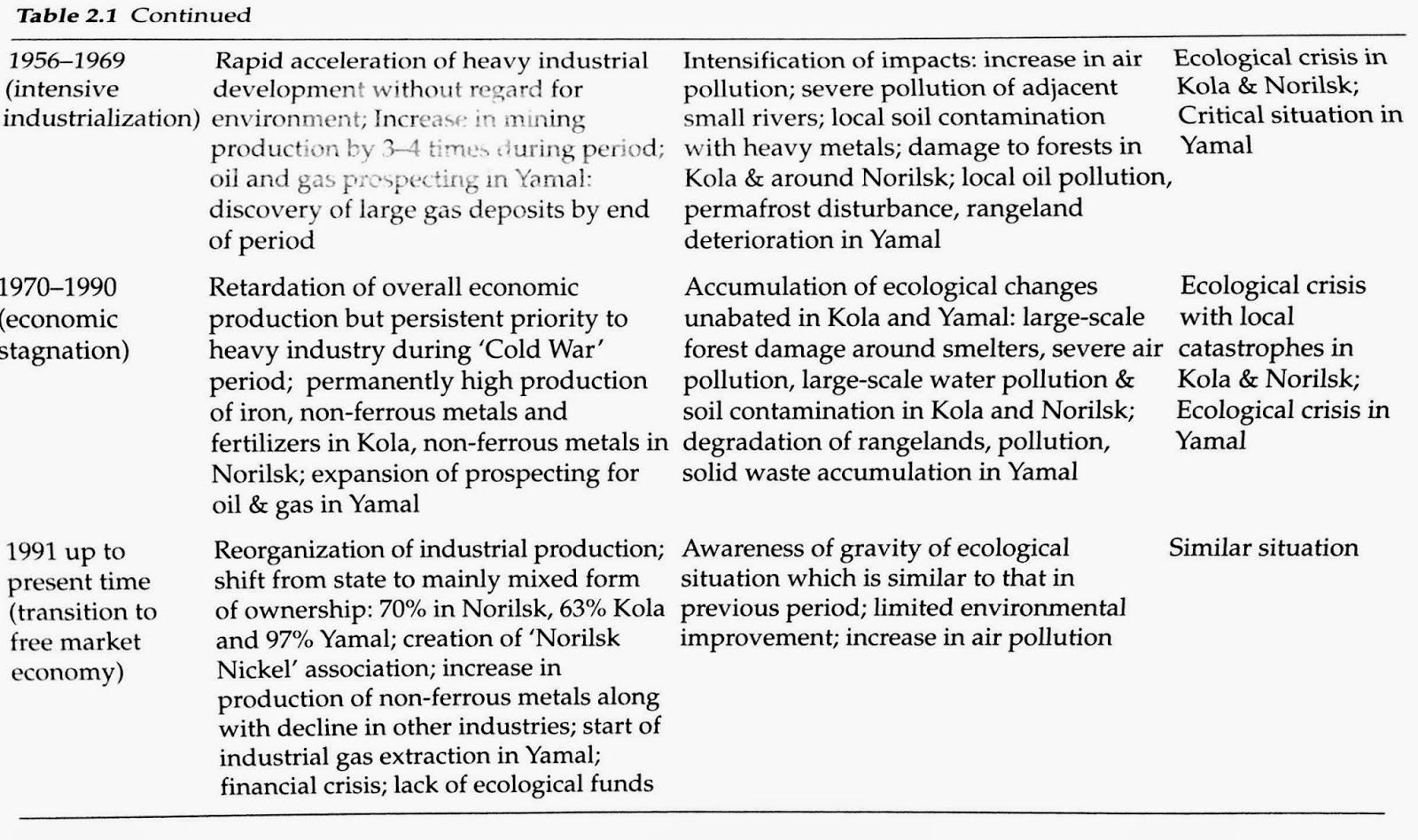The Arctic north of Russia is a vast amount of territory to the north of the Arctic Circle, which stretches along the whole of the Russian Federation both in Europe and Asia. In Russian literature you can also find a definition «Krayniy Sever» [Extreme North] and it includes such regions as the Kola peninsula, the Yamal peninsula and the city of Norilsk (which I already looked at in one of my previous posts).
The region rich in oil, gas, gold, coal and diamonds for years have been dominated by an approach which can be formulated as follows: «the more we take from the Arctic, the better». Such approach eventually led to the conflict between industrial civilisation and Arctic ecosystem, which Russia is facing today.
Throughout the history of the world the human impact on the Arctic North remained insignificant, but this has changed in the 20th century with the beginning of Stalinist industrialisation. The «North» was already playing a very important role as a resource base during the Soviet period, however, with the fall of the communism it’s importance only increased. Currently, it’s territory accounts for 80% of all Russia’s oil, 90% gas, 90% nickel and gold production, in addition to a a great share of mineral fertilisers and timber.
The intensive economic development of the Arctic North, which has been responsible for the degeneration of the environment is associated with the intensification of industrial production during the «Cold War» period. The Russian Arctic North has been affected by various activities ranging from mining, non-ferrous Metallurgy to oil and gas extraction.
Air Pollution
Chemical and dust pollution is mainly the result of mining, non-ferrous metallurgical industry and oil production. Annually, about 6.5 million tonnes of pollutants are emitted from stationary sources into the atmosphere over the Russian Arctic, which account for 18% of all Russian emissions. The range of emitted pollutants include highly toxic contaminants as benzopyrene, lead, vanadium, chromium and mercury.
Lately, mechanical disturbance of the ground and dust pollution become more significant, which come from the transportation of of toxic dust from quarries. The toxic substances reach the environment affecting vegetation, soils, surface and ground waters. Annually 30 million tonnes of waste rock is produced by the Apatity combine, located on the Kola peninsula. It has been estimated that after 60 years of it’s operation, the impact area of pollutants reached 300 km2.
The Russian Federation is one of the world’s top five energy producers. It's oil and gas industries in West Siberia annually burn over 19 billion m2 of associated gases, releasing hydrocarbons, heavy metals and carbon dioxide into the atmosphere.
Water pollution
Soil contamination
Between at least 700,000 to 840,000 hectares of polluted soil in West Siberia Region is polluted by oil, the area much larger than indicated by the government. It has been caused largely by oil pipeline and well spills, but also by oily muds, drilling and production waste, chemical waste disposal and leaking storage places.
The toxic effect of oil spills in the Extreme North is worsened by the fact that the region is layered with impermeable permafrost, which means that pollutants are absorbed by ice and snow and remain in the environment for centuries.
The economic activity in the North is often associated with damaging the soil cover and permafrost environment. This results into formation of thermokarst lakes and water logging, which can potentially be a source of significant carbon emissions during global warming.
Vegetation
The Kola peninsula, perhaps the most economically developed area of the Russian North, is covered with over 100,000 hectares of «anthropogenic desert». The trees in this zone are not able to survive due to high sulphur dioxide emissions, so the forest border line is moving to the south each year, giving a prospect of turning the peninsula into the rocky tundra in a few decades.


No comments:
Post a Comment